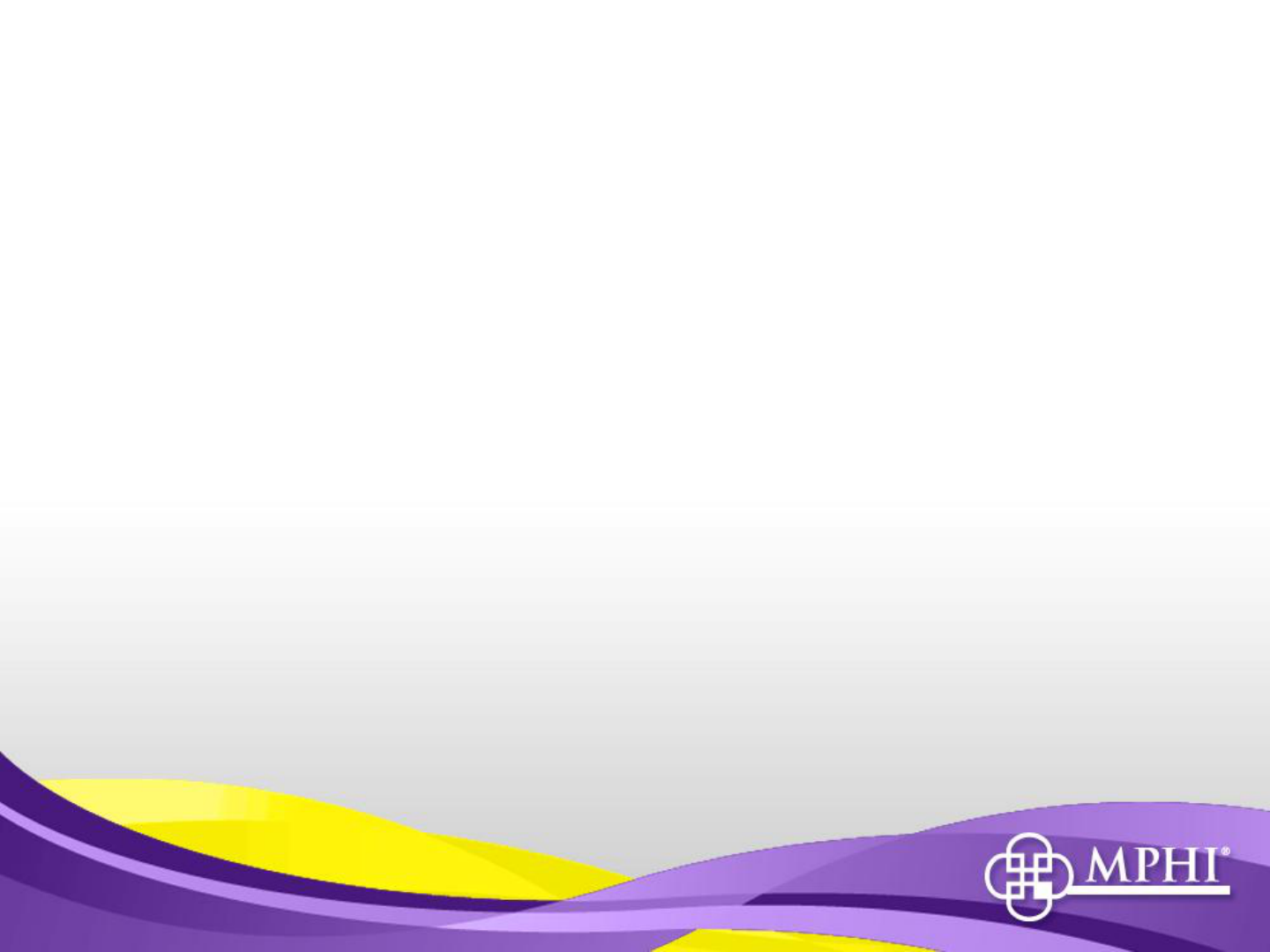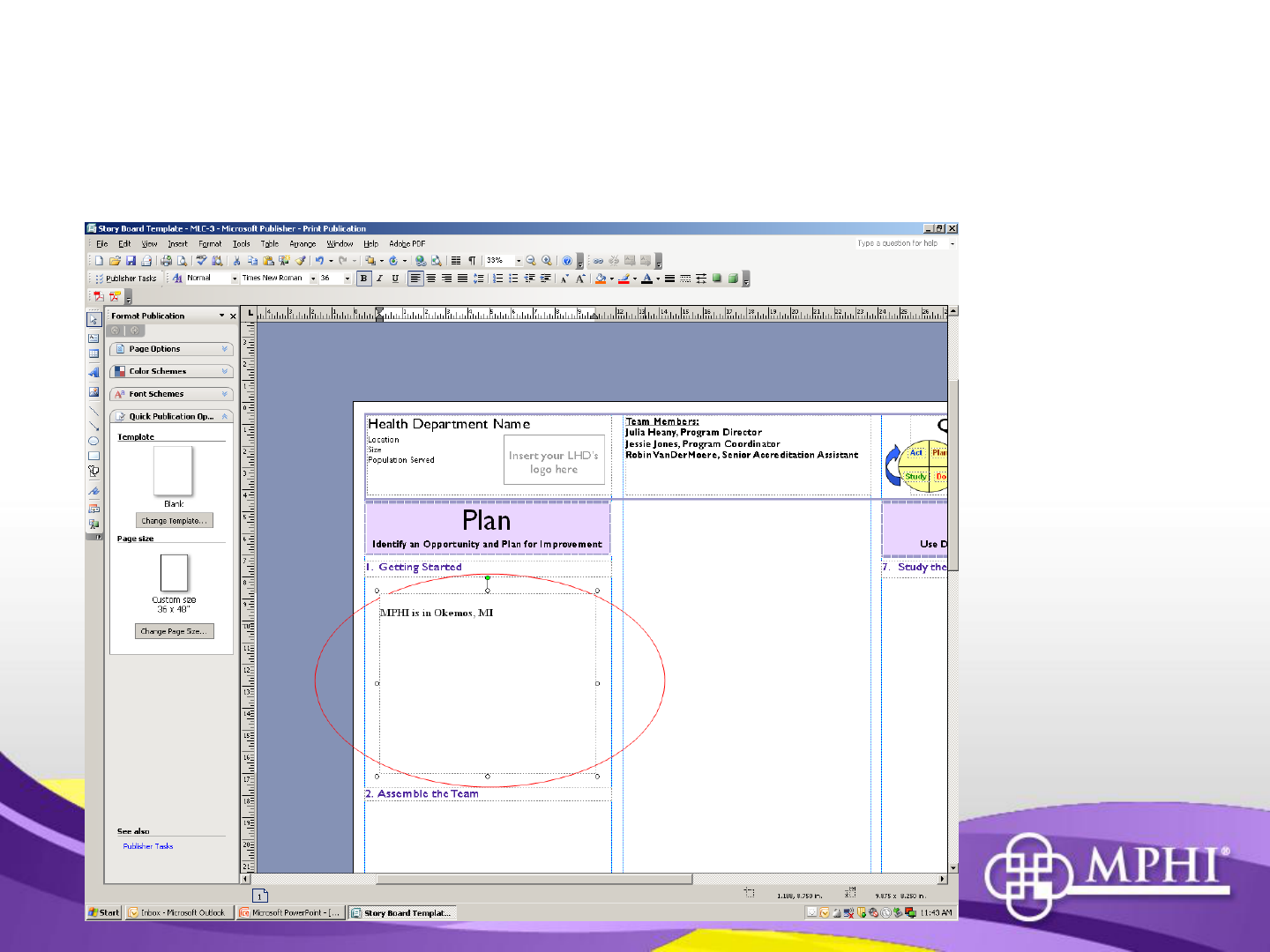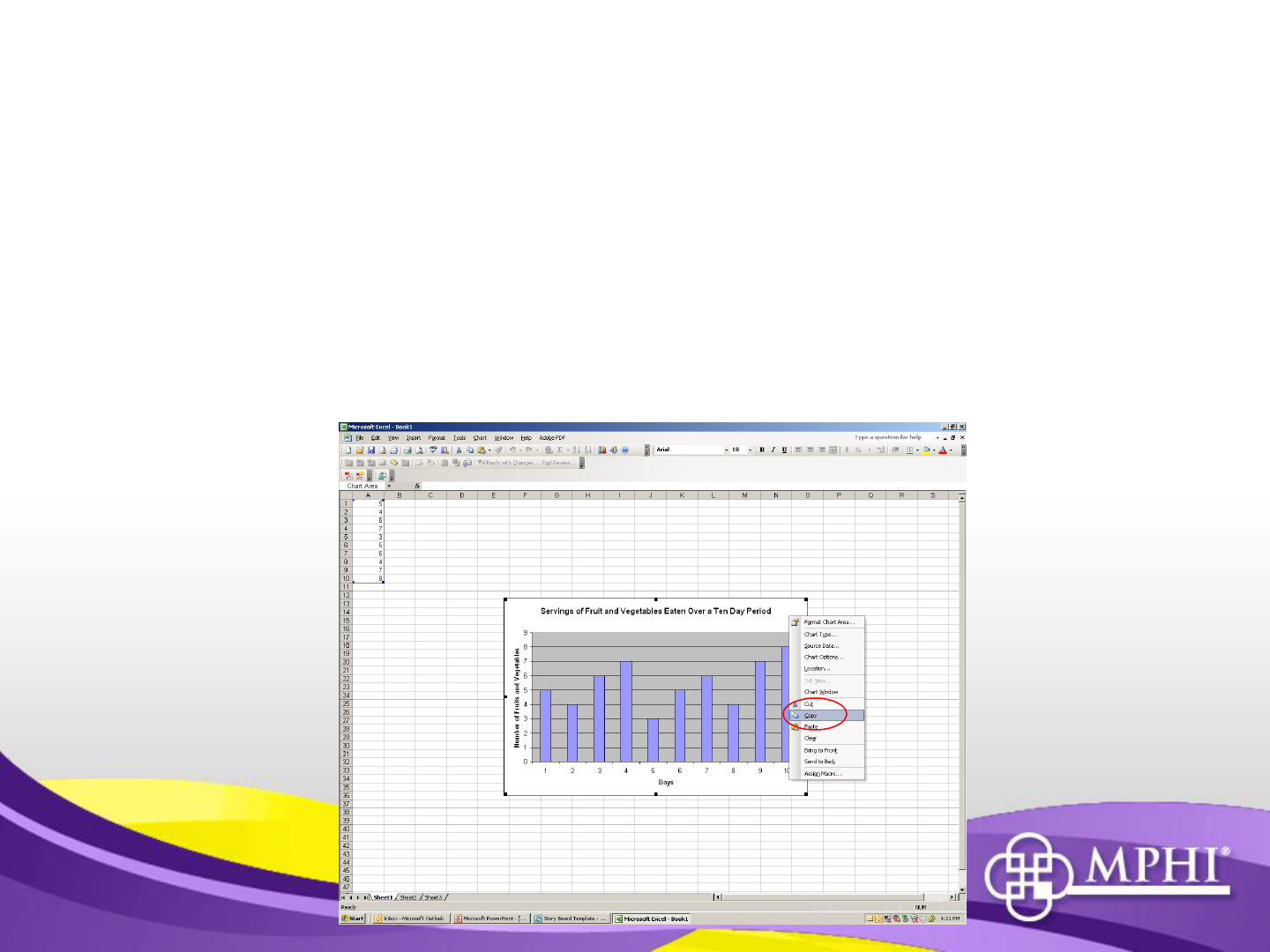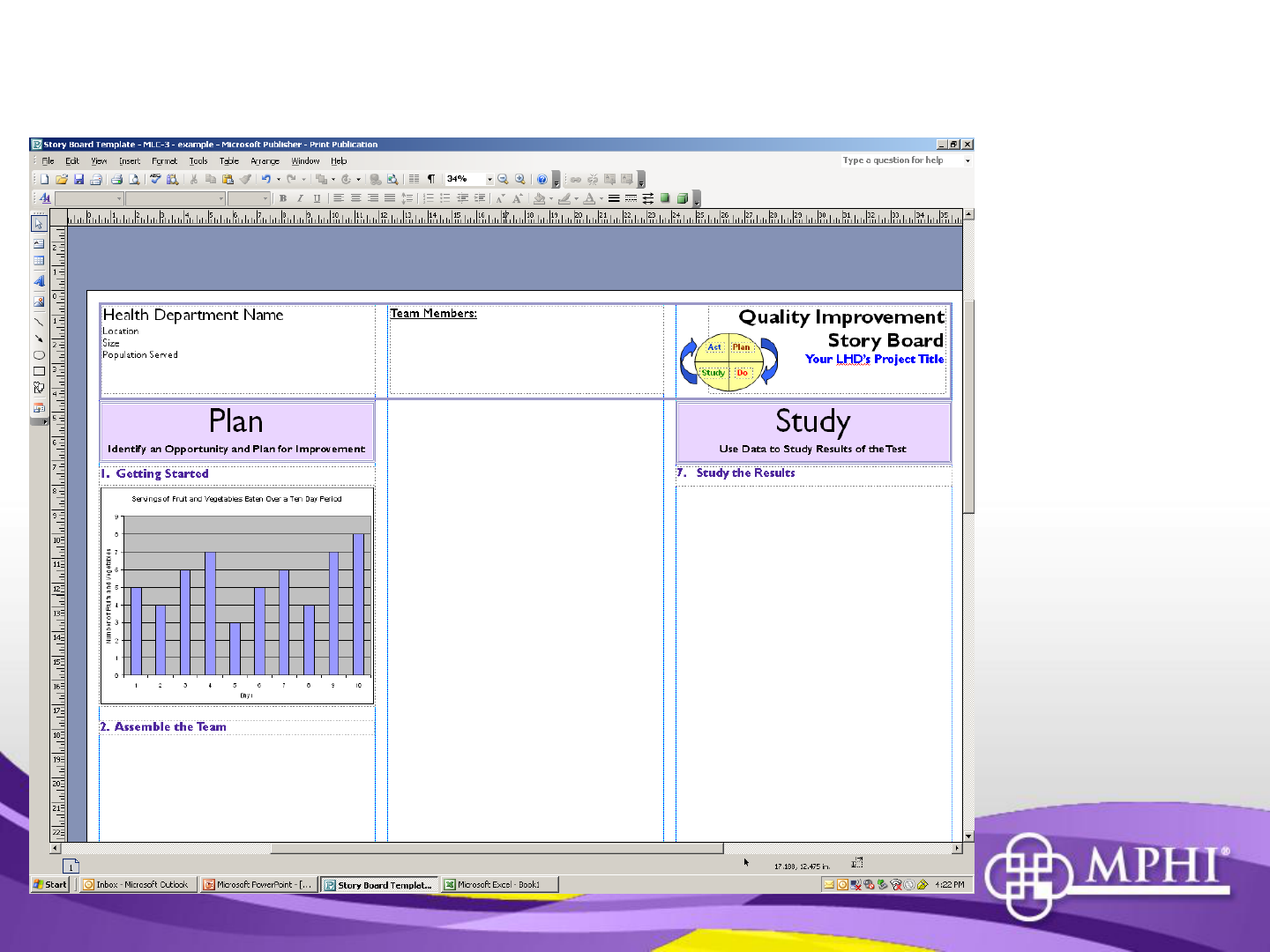
An Introduction to
Logic Modeling

Outline
• What is a logic model?
• How to use a logic model
• How to build a logic model

What is a Logic Model?
• Brief definition:
– A logic model is a “graphic representation
of a program showing the intended
relationships between investments and
results.” (Taylor-Powel & Henert, 2008)

Simply…
• A logic model is a graphic depiction of
the program showing the relationships
between what the program does and
what results are expected – the
program’s “Logic”.

Why create a logic model?
• To support your QI work, but also great
for:
• Program Planning
• Communication
• Evaluation

Logic Models and QI
• A logic model can help:
– Define intended program outcomes
– Clarify linkages between program
processes & outcomes
– Identify gaps
– Identify strategies
– Communicate program intentions

Logic Models and QI
• Logic models can be useful in the PDSA
process
– Develop during the Plan stage
– Refer to during Study phase
– Refine/edit/rework during Act stage

Basic Logic Model
Inputs Outputs Outcomes
Activities Participation Short Medium Long
Assumptions and External Factors

Logic Model Components
• A logic model can be seen as a series of “If-
Then” sequences:
– If we are facing this SITUATION, then we can
create a program to address it.
– If we invest these RESOURCES, then we will be
able to do these ACTIVITIES.
– If we reach these PARTICIPANTS with our
activities, then we should see these OUTCOMES.

Logic Model Components
• INPUTS
– Resources – “What we invest”
– Resources are the inputs that go into a
program.

Logic Model Components
• INPUTS
– Examples of inputs include:
• Personnel
• Funds
• Expertise
• Previous Research
• Physical Space
• Equipment

Logic Model Components
• OUTPUTS
– Activities – “What we do.”
• Activities detail the steps you will take to
address the situation.
– Participants – “Who we reach.”
• These are the people who are in the target
audience of the program or intervention.

Logic Model Components
• OUTCOMES
– “What we plan to achieve.”
• Short, Medium, and Long Term Outcomes
• Should include both the ultimate outcome
desired as well as other outcomes that may
result – including possible unintended
outcomes.

Logic Model Components
• OUTCOMES
– Should be:
• Specific
• Measurable
• Achievable
• Realistic
• Time-based

Logic Model Components
• Programs are also created with certain
ASSUMPTIONS in mind, and are affected by
certain EXTERNAL FACTORS.
– No program works in a vacuum.
– Assumptions about why the program will lead to the desired
outcomes should be listed to help explain the program’s
theory.
– External factors that may affect what the program is able to
accomplish should be considered and listed in order to give
context.

What does a Logic Model look
like?
• Many different formats
– Graphic display of boxes and arrows
– Horizontal or vertical
– Any shape possible, including circular
– Multi-Level


RESOURCES
ACTIVITIES
OUTPUTS
SHORT & LONG-
TERM OUTCOMES
IMPACTS
In order to
accomplish our set
of activities we will
need the
following:
In order to address
our problem or
asset we will
conduct the
following
activities:
We expect that
once completed or
underway these
activities will
produce the
following evidence
of service delivery:
We expect that if
completed or on-
going these
activities will lead
to the following
changes in 1-3
then 4-6 years:
We expect that if
completed these
activities will lead
to the following
changes in 7-10
years:

PH Program Logic Model
MCPP Healthcare Consulting, Inc.
Inputs Outputs Short Term
Outcomes
Intermediate
Outcomes
Long Term
Outcomes
Resources Activities
Staff
Money
Improved
knowledge,
beliefs, attitudes
% of Spanish
clients responding
Yes to Usefulness
of Brochure
Improved
Behaviors
Program
Development
Program
Planning
Materials
Development,
Distribution
Informed,
Targeted Program
Appropriate,
Targeted
Materials
# of materials in
non-English


MLC Logic Model Example


Story Boards as Logic Models
• A story board can be a type of logic
model when used to:
– Describe a program,
– Tell how it operates,
– Tell what it does, and
– Tell who it benefits and how.

Good Basic Logic Model
Resources
• University of Wisconsin Extension
http://www.uwex.edu/ces/pdande/evaluation/evallogicmodel.html
• W.K. Kellogg Foundation Evaluation Handbook
http://www.wkkf.org/knowledge-center/resources/2010/W-K-Kellogg-
Foundation-Evaluation-Handbook.aspx
• CDC Evaluation Working Group Resources – Logic Model Resources
http://www.cdc.gov/eval/resources.htm#logic model
• Centre for Community Based Research – How to create a logic model
using PowerPoint
http://www.communitybasedresearch.ca/resources/How%20to%20mak
e%20logic%20models%20in%20Microsoft%20Powerpoint.pdf

• Comments?
• Questions?

Using Microsoft
Publisher for Story
Boards

Getting Started
Open the template. You will get a page that looks like this:

Saving the Template
Go to the File menu, use the “Save As” function, and give
your draft a name, e.g., “LHD Story Board Draft 1”

A Word About the View
The default view is 17%. You can find this at the top of the
page:

Changing the View
• The reason the view is so small is that the
document is set up to be printed as a 36” by 48”
poster.
• To change the view, simply click the drop down
arrow and choose one of the pre-defined view
sizes or type in your own.
• The most effective view for editing is about 33%.
• You can move the page around using the scroll
bars on the bottom and right side of the page.

Let’s Try It
Highlight the text
“Health Department
Name” in the upper left
hand corner and type
in your own LHD’s
name.

Now You’re Ready to Edit!
• Let’s start with text editing.
• All text is contained within text boxes.
• Like any Microsoft software, you can edit by
clicking and highlighting the text you want
to change and typing directly over it.
• You can also click to place the cursor in the
text box and type like you would in any
Word document.

Another Exercise
Place your cursor in
the “Team Members”
text box in the middle
and type your team
members’ names.

Creating a New Text Box
Go to the “Insert” menu and choose Text Box.

Creating a New Text Box, Cont.
A crosshair will pop up. Place and drag until the text box is the
desired size.

Let’s Try It
Place your cursor in the text box and type a sentence.

Notes About Text Boxes
Text boxes can be resized by placing your cursor over
one of the circles around the edge. You will get a double-
headed arrow. Click and drag to your desired size.

Notes About Text Boxes,
Cont.
• If you wish to move the text box, select the text box
and hover your mouse around one of the edges.
You will get a 4-headed arrow, and you can click
and drag to move the box.
• To delete a text box, click on it to select it and
press “Delete” on your keyboard. Alternately, you
can right-click and select “Delete Object” from the
menu.

Stylizing Your Text
• Changing font face, size, and color is
accomplished exactly like in Microsoft
Word.
• Highlight your text and choose the
font, size, and color from the
formatting menu.

Font Face, Size, and Color
Font
Face
Font
Size
Font
Color
If you have the font face “Gill Sans MT”, this is the font utilized throughout
the story board template. If you do not have this font, a substitute will
have been made on your computer. Try to keep fonts consistent
throughout the story board for uniformity of style.

Bite the Bullet
To add bullet points to a text box, simply press
the bullet list button on the formatting bar.

Let’s Try It
Make a bulleted list of the cities you have lived in.

Other Formatting Options
• The formatting toolbar above is identical to the one in Word
• Options for text alignment (left, center, right, full justification), bold,
italic, underline, changing the background color of a text box (paint
can)
• More options are available in the “Format” “Font” menu, such as
different types of underlining, text shadows, small caps, etc.

Text to include on Story board
• AIM Statement
• Five Whys
• Improvement Theories (If…Then)
• Utilize bullets!

Worth 1,000 Words
Remember, story boards should be
very graphic-heavy.
We want to show our audience what
we are doing rather than tell them in
words.
Let’s add some graphics.

How to Insert a Graphic
Go to the “Insert” menu Choose “Picture”
Choose “From File”

Who Can Resist a Bunny Drinking
Coffee?
Just like with the text box, you can resize your picture by
pulling on the corners or sides, and you can move it by
clicking and dragging with the 4-headed arrow.

Let’s Try It
Add your health
department’s logo
to the top left
corner of the story
board. (Hint: you
should use two
skills here; first,
delete the text
box. Then insert
your picture.)

The Other Way to Do Things
• You can also copy and paste graphics into your
storyboard.
• For example, if you have a chart in an Excel sheet,
you can select the chart, right click, select “Copy”, then
right click on your story board and choose “Paste.”

Voila!

A Word of Caution
• Most images created in Excel (e.g., graphs, charts) can
be resized to a fairly large size.
• However, other images, such as logos and photos, as
well as most images from the Internet, can only be
enlarged to a point before they start becoming pixilated
and unsuitable for print.
• This is due to the number of dots per inch (dpi) on the
image. The more dots that are packed in per inch, the
better.

Can You Tell What This Is?
Don’t be afraid.
It’s just a kitten.
Original photo
size:

Graphics you may want to include on
your story board:
• Process Map
• Fishbone Diagram
• Bar Charts
• Check Sheet
• Run Chart
• Pareto Chart
• Logic Model
• Other tools your team utilized for the project

Looking at the Big Picture
To print your storyboard on a
standard 8.5 x 11 page, use the
following steps.

File Save As
Save as Type Enhanced Metafile

It will say “Resolution” below the “File name:” and “Save as type:”
when you choose Enhanced Metafile, and will default to “Desktop
printing (150 dpi).”
Click “Change” and choose “Commercial printing (300 dpi)”.
Remember, the more dpi, the clearer the picture.

Click “Save”
To print the file, right click on the file and choose “Open
with” “Windows Picture and Fax Viewer”
Click the printer button on the bottom of the page. This will
bring up a print wizard.

Choose your printer.
The next screen will ask you what size to print. Choose “Full
page photo print: cropped and rotated to fit” (the second
option). Click “Next” and printing will begin.

In Closing
• Microsoft Publisher, in general, is very
much like other Microsoft Office programs.
• If a certain feature/function is in a menu in
Word, it is very likely in the same place in
Publisher.
• Printing of the 36” by 48” Story Boards will
be handled by MPHI.

Technical Assistance
If you need any additional assistance with Publisher or
seem to be stuck, please contact:
Robin VanDerMoere
517-324-8380
I’ll be happy to help you!

